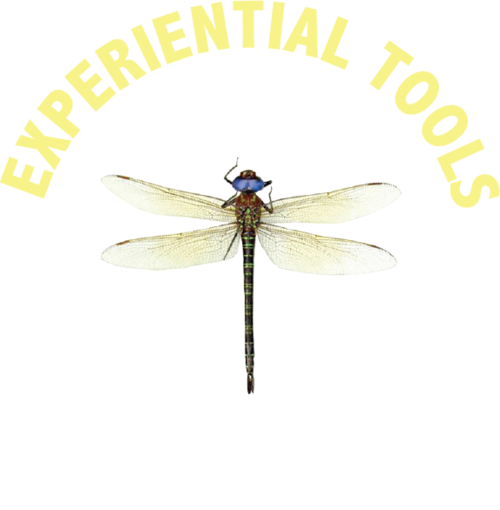Oct 13, 2011 The Right Ingredients at the Right Time: Sequencing Group Learning Experiences
 As with cooking, facilitation is an art that involves a combination of practice, observation, knowledge of theory and creativity. Effective group facilitators and teachers act as a good chef does, adding together the important elements in the right amounts at the right time to create a palatable and hopefully meaningful experience. Through careful observation of all of these elements involved in a group’s personality and setting, they intentionally choose and order activities or “ingredients” in order to maximize learning opportunities.
As with cooking, facilitation is an art that involves a combination of practice, observation, knowledge of theory and creativity. Effective group facilitators and teachers act as a good chef does, adding together the important elements in the right amounts at the right time to create a palatable and hopefully meaningful experience. Through careful observation of all of these elements involved in a group’s personality and setting, they intentionally choose and order activities or “ingredients” in order to maximize learning opportunities.
Many educators and facilitators call this important aspect of facilitation and teaching “sequencing”.
Sequencing involves consciously and thoughtfully presenting activities in a specific order to maximize learning outcomes and maintain the emotional and physical safety of the group. Being thoughtful, observant and intentional in your planning, presentation and evaluation of activities is one of the essential aspects of effective group facilitation, teaching, and team building.
There is no one specific “recipe” for sequencing activities or lessons that fits every group. In cooking there is a lot of room for creativity, style and adaptation but there are key rules and fundamental ingredients needed in order for a cake to rise or a sauce to thicken. The same is true for the facilitation of group learning experiences. Approach sequencing as a dynamic process that takes into careful consideration the personality and dynamics of the group, your strengths and style as an educator, participant’s emotional and physical safety, the group’s goals and agenda, available activities and materials, allotted time, and the physical environment.
In cooking the timing and ordering of ingredients is key to the success of many dishes. Ingredients often need to be added in a certain amount, a specific order and cooked for just the right duration for best results. Good facilitators are in tune to the importance of activity choices, and the ordering and timing of experiences. Effective facilitators pay attention to the group development process, and allow time for trust building. It is important to balance the level of the activity and or challenge presented and the participant’s ability to meet the challenge or activity. Leaders need to continually observe their group in order to be sure the activities they select fit the needs and goals of the group and the specific situation.
The time needed for participants to create relationships and build trust is different for every group. When interpersonal connections and sense of community is developed groups will take learning further and get more benefit out of the activities they engage in. Allow time for this happen by choosing activities that build upon each other.
When sequencing learning experiences be sensitive to the time of day and the physical comfort and attention span of group members. Being flexible as a facilitator in dealing with the unexpected is key. Listen to your group and be prepared to change your plan midstream in order to adapt to the ever changing needs of the group and to take advantage of new opportunities for learning that emerge as a group works together.
Careful sequencing maximizes participation by allowing people to engage at a pace that works for them. Experiential group work can be very powerful. If groups are ready to engage in the process great things can occur. Conversely, if a group is not emotionally or physically ready to encounter certain “learning adventures” the experience could be damaging or inhibit growth and learning. An effective educator approaches activities with intention, thoughtfulness, and flexibility—continuously evaluating their group and refining their plan as they need to.
Sequencing Suggestions
- Be ready with a continuum of activities. It is important to have a repertoire of activities that build upon each other. Having activities in your “back pocket” allows you to be ready to deal with changes in direction and learning opportunities that arise in an ever-changing group.
- Be flexible enough to throw out or let go of that well developed plan if the group needs are different than expected.
- “Indicator” activities are helpful. Know some activities that help you read and evaluate the group and introduce challenges incrementally. For example, over the years I have facilitated many challenge/ropes course programs. These involve physical touch and responsibility on the part of the participants to manage “spotting” each other. Before going on to the course and teaching safety systems I facilitate a series of partnered tag activities that involve moving around in a small space, appropriate physical contact, and the need for be aware of those around them. This introduces the idea of appropriate touch and close personal space important to the spotting techniques the group will be learning. It also helps me evaluate whether the group is engaged and ready to take the responsibility of balancing fun with safe focused behavior.
- Let participants know what is expected of them and the type of activities they will be participating in. Informed consent is critical. Let participants/students know what is expected of them and the type of activities in which they will be participating. Informing the group about the upcoming activities doesn’t have to give away the novelty of your approach. Think about informed consent as empowering participants with needed information. If reluctant students make a choice not to participate, they will at least know what opportunities they might be missing.
- Continually observe your group and re-evaluate your plans in order to be sure the activities fit the needs and goals of the group and the specific situation.
- Be sensitive to the time of day and physical environment when presenting activities
- Take time to build relationships and trust between group members
- Be prepared for the unexpected
- Take advantage of teachable moments. Ongoing processing or reflection is key to moving learning forward. Reflective practice is best when it is a dynamic ongoing part of your lessons, not just something you facilitate as a follow up (see previous posts for processing ideas)
- Choose activities that build upon each other
- Be willing to let go of your agenda to meet the needs of the group
Recognize that each group is unique. Every group has a different personality and participates in activities in a different way. Even when working with groups with similar characteristics, in the same setting, with the same program goals, I have found that the actual lesson plan changes with each different group in response to that group’s particular personality and needs. Activities you carefully plan prior to a workshop or group session may be specifically relevant for one group’s personality and needs and not another’s. This is one of the exciting aspects of group facilitation.
There is great variety in group experience and varying opportunities facilitate learning. With experience, facilitators develop the art of reading their group and adjusting activities in a creative way throughout group process to move learning and change forward. This is the beauty of experiential education, nurturing spontaneity of experience to take advantage of teachable moments. The art is in balancing this spontaneity and creativity with the key ingredients and timing to make it all come together successfully.



No Comments